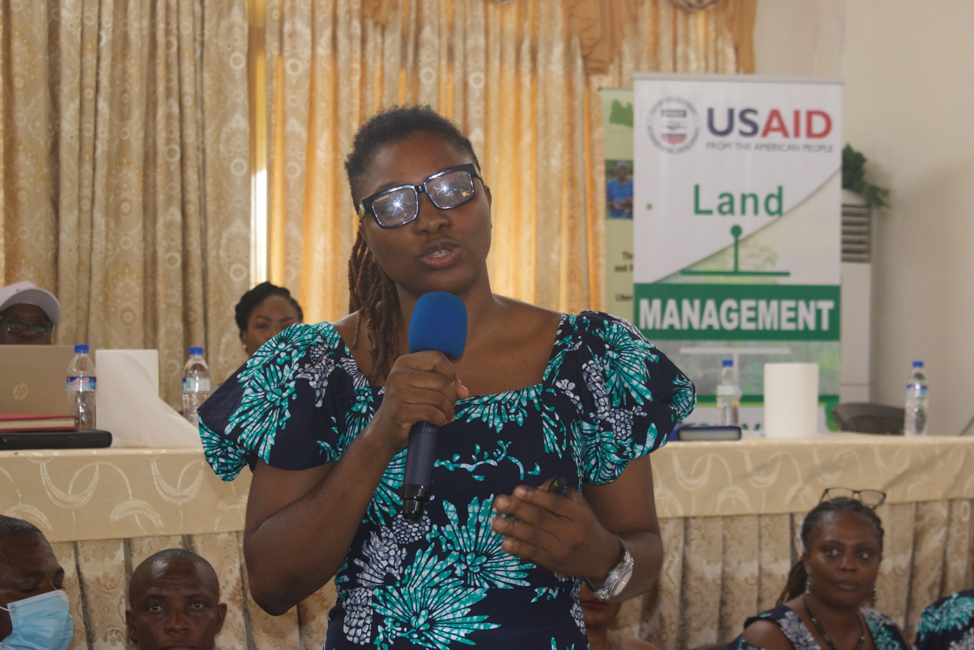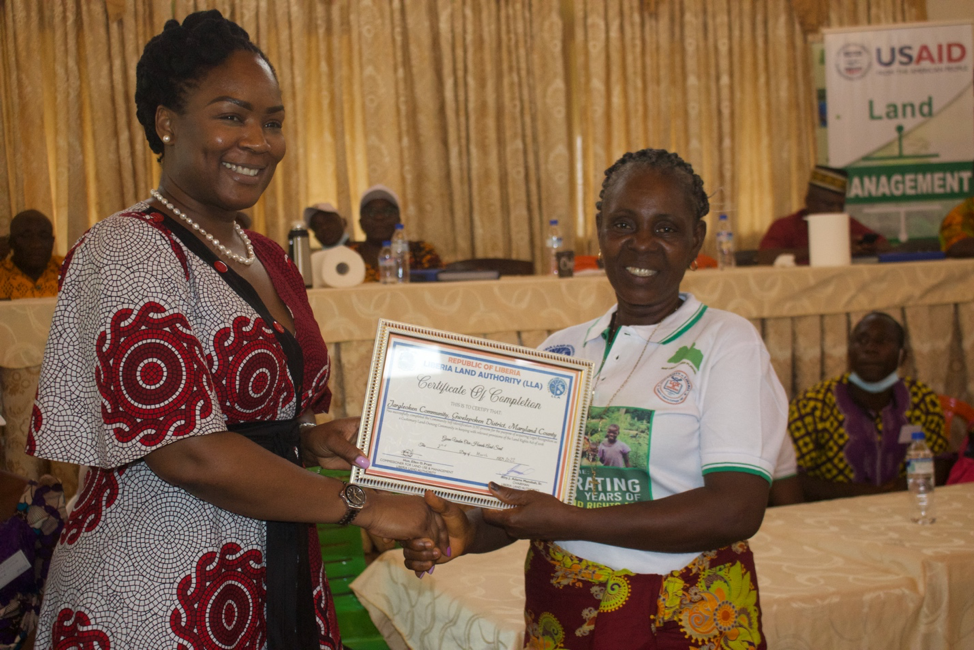Top: Sarah Tugbo receives Jargleoken’s self-identification certificate from Commissioner Ellen Pratt of the Land Authority. The Gwelepoken District community in Maryland was one of 31 communities certified at the just-ended Land Conference in Buchanan, Grand Bassa County. The DayLight/James Harding Giahyue
BUCHANAN, Grand Bassa County – Thirty-one communities from Lofa, Maryland and River Gee have been formally recognized as landowning communities, a key requirement in the Land Rights Act.
Covering an estimated 627,458.93 hectares, 14 of the communities are from Maryland, 13 from River Gee and four from Lofa. Their certification was one of the highlights of the just-ended National Land Conference, held in Buchanan, Grand Bassa County.
“I feel so good and I am very glad for my community to be certificated,” said Paramount Chief Alvin Daniels of Mimunken, River Gee in an interview with The DayLight after the end of the conference. “We have power over our own land.”
“We were in darkness,” said Sarah Tugbo of Jargleoken, Gwelepoken District of Maryland County. “We feel free, they [taught] us well and we know what is right and good.”

The Sustainable Development Institute (SDI) supported the communities as part of a one-year USAID-funded Integrated Land Resource Governance (ILRG) project, costing over US$300,000.
Nora Bowier, SDI’s lead land-rights campaigner, told The DayLight in an interview the communities had also completed their bylaws, and set up governance bodies, with some having already completed cutting boundaries with neighboring areas. Having reached that far, all 31 communities will the Liberia Land Authority will survey their territories alongside a GPS-coordinated mapping to conclude the process to get their deeds.
Bowier said SDI, which has now supported 75 communities in the process to obtain their titles, noted many challenges working in those areas.
“One of the challenges is women’s capacity communities and members of the CLDMC are many,” Bowier said.
She said the sizes of communities as well as members of the governance bodies—referred to in the land sector as community land development and management committee (CLDMC)—was another issue.
“We have realized the number of CLDMC are very huge, some up to 100 members. Bringing one hundred people to convene meetings is hard. So, we are thinking about scaling down the group, though we want to bring about equal representation.”




